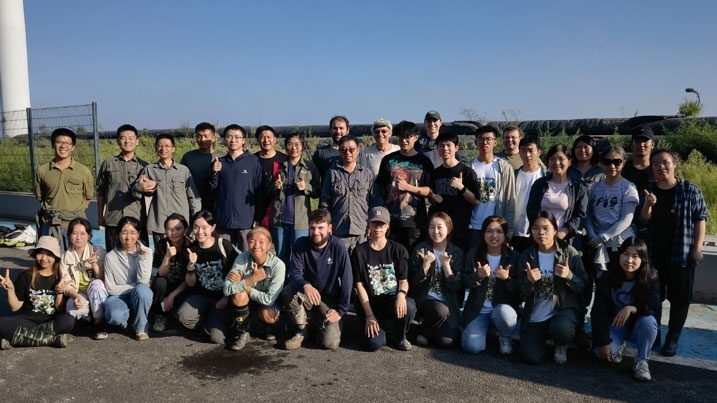Spoon-billed sandpiper update
Autumn 2023
Headstarting slows the population decline
The spoonie population was believed to be declining at a staggering rate of 26% every year between 2002 and 2009. As you may recall, that rapid drop in numbers meant there was a very real threat of them becoming extinct by 2019, and so slowing that rate was crucial. Headstarting, thanks to your support, has been playing a key role.
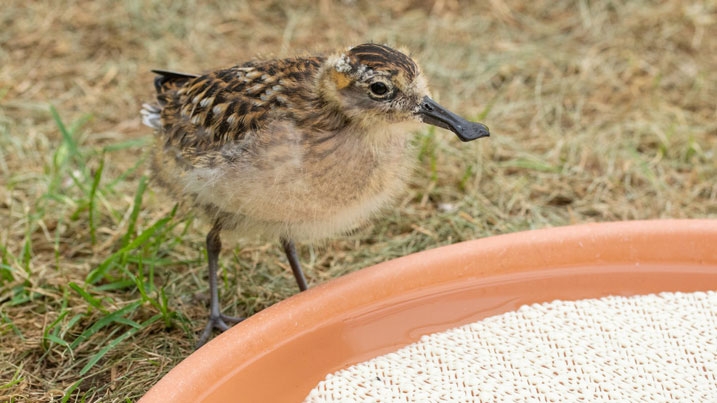
Between 2012 and 2021, our spoonie headstarting work, in partnership with Birds Russia, led to 82% of 309 viable eggs hatching successfully. 93% of those 253 hatchlings went on to be released, a strong start to slow the rate of decline. There is still a long way to go to save the spoonie, but one particularly important benefit of headstarting is that it increases the proportion of fledglings that survive: from 2.5 out of every 20 eggs laid, to an amazing 15 out of every 20.
The current Russia-Ukraine war has inevitably interrupted the headstarting project, but other important work has been going on meanwhile. As you’ll read about below, the team have been gathering insights from their collective hard work so far, and training local conservationists and university colleagues along the spoonies’ East Asian-Australasian (EAA) flyway to help with other aspects of spoon-billed sandpiper conservation.
Breeding pairs, healthy hatchlings and what they can tell us
Dr Alex Nicol-Harper is WWT’s Principal Research Officer for Species Recovery. She has been digging even deeper into the results of the headstarting programme to find out how we can keep improving the spoonies’ recovery and boost their survival.
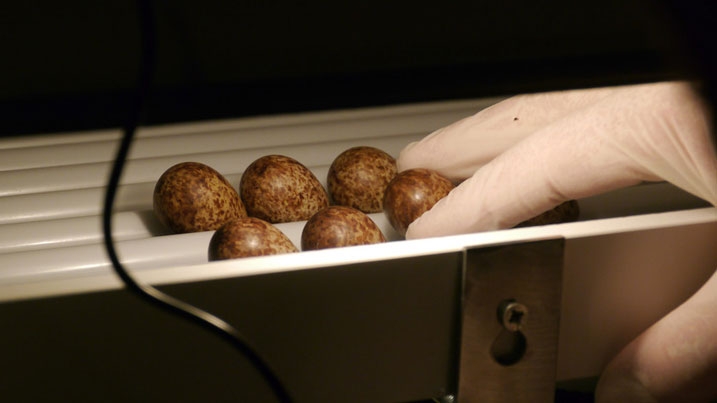
Breeding: In terms of breeding, at least 25 spoonie pairs have relaid every time their first clutch has been collected for headstarting. Their second clutches have produced two or three further fledglings in addition to their headstarted chicks. Of those relaying pairs, at least 12 of them consist of two birds which were themselves headstarted, which is a fantastically encouraging result.
Hatching: Alex’s analysis into the hatching success is helping the team identify the optimum time to collect eggs for headstarting. Early collection certainly avoids possible predation of eggs, but the results so far show that hatch success is higher for eggs which were incubated by their parents for a longer period.
Survival after release: The third main question is ongoing, and concerns the survival of headstarted spoonies once they’ve been released into the wild. “Despite later collection yielding better hatching rates, this is not the case for the survival rates of released birds,” says Alex “so there is more research to be done here to understand why this could be.” We look forward to sharing her findings with you.
Your support is enabling the team to conduct crucial in-depth research like this. The results will not only help future headstarted spoonies, but also inform other rear-and-release programmes. Thank you again, because these insights are key to helping endangered bird species come back from the brink of extinction.
Tracking and training
Spoonies are serious migrators, travelling between their breeding grounds in north-east Russia and their wintering sites in south Asia. Knowing where they spend their time on migration, to rest, moult, breed and feed, is of paramount importance for their survival because it tells us where to focus conservation efforts.
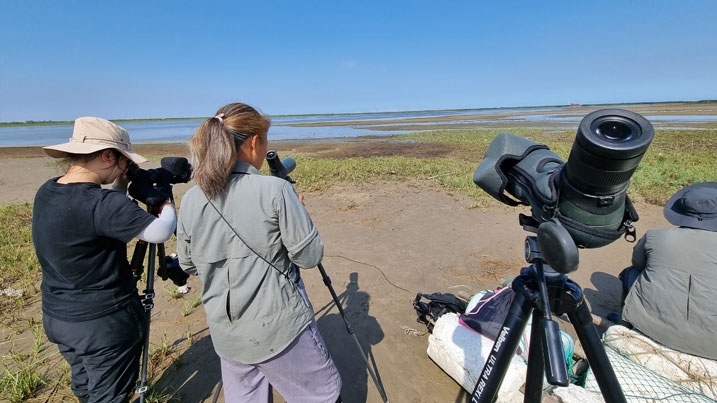
To date, we’ve been able to identify wintering sites for about half the estimated spoonie population. We need more data to help us learn where the missing birds are, and provide up-to-date information so we can keep abreast of their survival and behaviour patterns.
Dan Gornall is a WWT Research Officer for Species Recovery working as part of the Spoon-billed Sandpiper Taskforce. Dan has just returned from China where the team has been catching and colour marking adult spoonies, and also training local university staff and students in monitoring techniques. “It’s important that we continuously maintain the colour marked population,” explains Dan. “They help tell us about population sizes and patterns, monitor the birds’ movement and build our understanding on how they use various sites.”
But fitting markers to adult spoonies is not for the faint-hearted. First catch your spoonie!
“It’s very intensive, time consuming and frustrating at times,” says Dan, “but extremely rewarding when things go to plan.” He and his UK colleagues took their expertise out to China for just 11 days, so they needed to fit as much catching and fieldwork as possible into the trip. “We attempted to catch at virtually all times of the day using a variety of different catching methods – mist netting at night, cannon netting, whoosh netting & walk through traps during the day.”
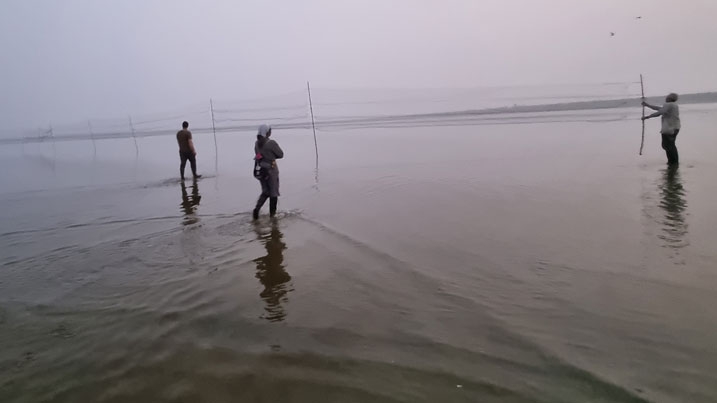
In preparation for the UK team’s arrival, the team in China had put in a lot of work. “They ensured all the access and permissions were in place, located spoonies in what is a constantly changing landscape, and narrowed down the best catching sites.”
For everyone involved, birds and people alike, conditions are tough and unpredictable. “The weather is usually very hot & humid, and the ground is usually wet and muddy. As we found out this year, heavy rain and stormy weather is also possible!” says Dan. “With the landscape in China changing all the time, the birds are constantly forced to find new roosting sites. All the catching sites are at high tide roosts, and we always catch around high tide, as this concentrates 1000s of birds at a limited number of sites rather than being spread widely across the vast mudflats. So careful planning around tide times is absolutely key.”
“The roosting sites might be on the mudflats themselves, but more usually they’re on fish and shrimp ponds, or rice paddies just inland from the coast.” This year, Dan and the team even found spoonies roosting in a newly pumped area for wind farm development.
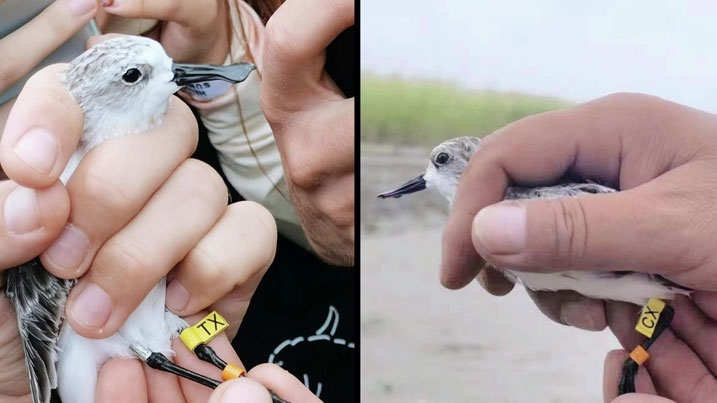
Once the site is identified, paperwork done and tide checked, what’s needed next are skills, equipment, stamina and patience.
“There’s a large supply of catching and ringing equipment out in China, including a cannon net, but this is supplemented by equipment brought over from the UK (mist nets, walk in traps etc)” says Dan.
“Then it absolutely takes time and patience. It might be an all-night 12-hour mist netting session, or patiently waiting for a spoonie to walk into the catching area of a cannon net (which more often than not doesn’t happen, so you have to try again the next day). The team is made up of very experienced wader ringers, with vast amounts of experience with a variety of different catching methods. Three of this year’s team members were experienced cannon netters, a rather unique skill for which only a limited number of people hold a licence in the UK.”
Marking the spoonies on the Dongtai-Rudong Mudflats of Jiangsu, now when the birds have just moulted, meant the team had as good a concentration of the world’s population as possible. “After this the birds will move on and spread out to a number of winter sites in Southeast Asia. Their marks will help us capture the next stage of their migration and wintering area data.”

In spite of the surprise heavy rain and storms, the team’s hard work paid off, both during the 11 days that Dan and his colleagues were there, and for the longer term. The team:
- Caught and colour marked two more spoonies
- Caught just under 1000 other waders of a range of species, fitting a number of these with tags, which will hopefully further contribute to our understanding of the importance of sites along the EAA flyway
- Collected a heap of scan sampling data at multiple sites along the coast, this should inform a new up to date world population estimate for spoonies
A team of around 25 students from Nantong Normal University helped throughout, and received training in ringing, bird handling, aging, and moulting to further their skills. “The standard of ringing and bird handling within the student team was extremely high,” says Dan, “surely a testament to training on trips in previous years. They will hopefully take their ringing skills forward with them in China.”
Sighted birds in 2022-2023
Wherever the bird is spotted on its long migration, communities have been rallying to protect the environments so crucial to the survival of both wetland wildlife and people.
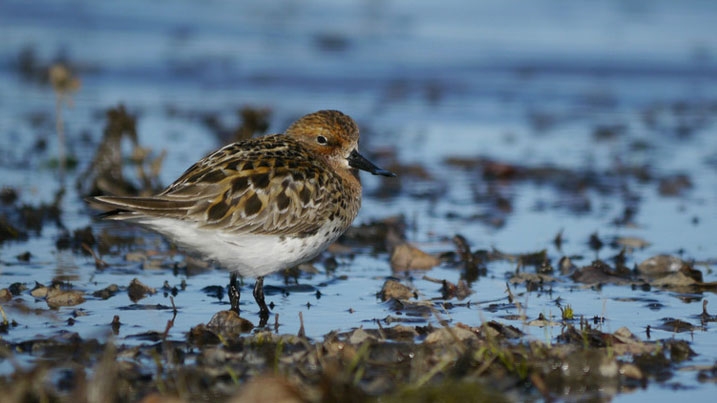
In Russia, monitoring has been a challenge since spring 2020, as you can imagine. Nevertheless, it has still taken place, and by the end of 2022, 62 (or 26%) of the headstarted birds had been sighted on the EAA flyway. Since headstarting was first attempted in 2012, 23 birds have returned to their breeding grounds for the June and July breeding season. “One of the 2016 headstarts even returned and bred the following year,” reports Alex. “We were surprised, given an expected minimum age at first breeding of two years.”
In 2023, a Russian team did spend the summer looking for spoonies around their breeding grounds in Meynypilgyno in Chukotka. They found 10 pairs, which is three fewer than last year. It is possible that fewer birds were found due to fewer surveyors present, but we are far from stopping their decline; though it is incredibly sad, it is not a surprising result.
Thank you
Your support makes all the difference, saving this beautiful bird from extinction
In spite of all the challenges, we and the whole SBS Taskforce working throughout the EAA flyway remain determined to save the critically endangered spoonies, restore their threatened habitat, keep learning and keep sharing our skills and knowledge.
Headstarting each year has slowed the population decline by an estimated 3% per annum. The way the birds have responded positively to the conservation action implemented so far shows how these charming little birds can recover with the right support team in place, and how much they still need our support. Thank you again for being a key part of that team.
